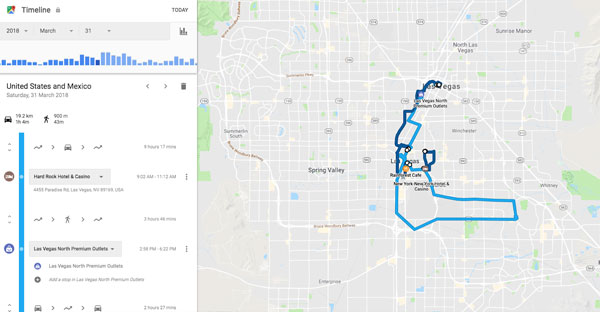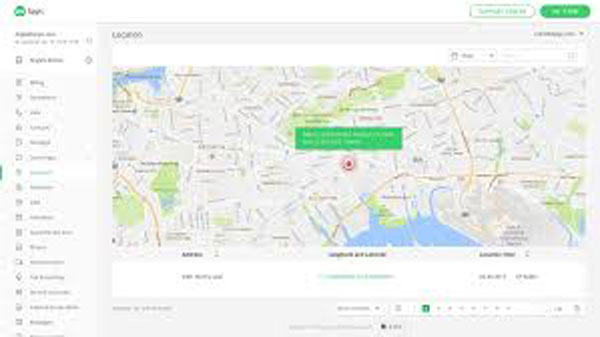Exness vs Oanda: A Comprehensive Comparison for Investors
updated on 06 24, 2025 | 1

Table of Contents
The forex market, with its daily trading quantity surpassing $7.6 trillion, is a vibrant and extremely affordable space. Choosing the best forex broker is vital for investors, whether you’re a beginner dipping your toes right into currency trading or a seasoned specialist carrying out high-volume professions. Two popular names in the industry, Exness vs OANDA, constantly rank amongst the leading brokers due to their robust systems, affordable trading problems, and solid regulative oversight. Yet which one is far better fit to your trading needs in 2025?
In this extensive comparison, we’ll dive deep right into Exness vs OANDA, examining their attributes, charges, platforms, regulation, and much more. By the end, you’ll have a clear understanding of their strengths and weak points to make a notified decision.
Overview of Exness vs OANDA
Exness: A Global Powerhouse
Founded in 2008, Exness has actually rapidly risen to importance in the foreign exchange sector.Read here download the Exness app At our site Headquartered in Cyprus, it runs under the law of top-tier authorities like the Financial Conduct Authority (FCA) in the UK, Cyprus Securities and Exchange Commission (CySEC), and the Financial Market Conduct Authority (FSCA) in South Africa. Exness is recognized for its high trading quantity, with a reported regular monthly turnover of over $325 billion, making it a preferred among high-frequency traders and scalpers.
Exness provides a wide range of financial instruments, consisting of foreign exchange, products, cryptocurrencies, and indices. Its user-friendly platforms, affordable spreads, and versatile leverage options (up to 1:2000 in some areas) interest both novices and experts.
OANDA: A Leader in Foreign Exchange Trading
Established in 1996, OANDA is just one of the oldest and most revered names in the foreign exchange market. Headquartered in the USA, OANDA runs around the world with offices in London, Singapore, Tokyo, and Sydney. It is controlled by numerous authorities, including the Asset Futures Trading Compensation (CFTC), FCA, and the Australian Securities and Investments Commission (ASIC). OANDA is renowned for its openness, innovative tools like the fxTrade system, and its historical payment to the sector, such as launching the Foreign exchange Trader’s Bill of Civil liberties.
OANDA sustains trading in foreign exchange, indices, assets, and cryptocurrencies, with a concentrate on providing advanced analytics and educational sources for traders of all degrees.
1. Law and Safety
Both Exness vs OANDA focus on investor safety with rigid regulatory oversight.
- Exness: Regulated by the FCA, CySEC, FSCA, and other authorities, Exness sticks to strict financial requirements. It supplies adverse equilibrium security, guaranteeing traders do not shed greater than their account balance. Client funds are held in set apart accounts, and Exness utilizes SSL encryption to shield sensitive data. Its more comprehensive series of licenses throughout numerous territories makes it a reputable option for international investors.
- OANDA: OANDA is managed by 7 Tier-1 authorities, including the CFTC, FCA, and ASIC. With a Trust fund Score of 93/99 according to ForexBrokers.com, OANDA is considered very reliable. It additionally gives adverse balance protection and uses advanced security methods. OANDA’s long-lasting online reputation and transparency even more improve its reputation.
Decision: Both brokers are highly managed and safe. Exness has a mild side for international traders due to its considerable global licensing, while OANDA’s strong Tier-1 policy attract those focusing on trust in major markets like the US and UK.
2. Account Types and Minimum Deposits
The ease of access of a broker typically depends upon its account types and minimum down payment requirements.
Exness:
- Criterion Account: Ideal for newbies, without minimum deposit for conventional accounts in some regions. Spreads start at 0.3 pips.
- Pro Account: Created for seasoned traders, calling for a $200 minimum down payment. Deals tighter spreads and faster execution.
- Raw Spread and No Accounts: Aimed at experts, these accounts feature spreads from 0.0 pips with a compensation per trade. Minimum deposit is $200.
- Exness’s reduced or no minimum deposit need makes it extremely easily accessible for new investors.
OANDA:
- Criterion Account: No minimum down payment, making it beginner-friendly. Spreads begin at 1.0 pip with no payment.
- Costs Account: Calls for a higher down payment (unspecified, differs by area) and offers lower spreads and advanced tools.
- OANDA does not offer specialized accounts for ECN or zero-spread trading, which may limit alternatives for sophisticated investors.
Judgment: Exness offers more account selection, catering to both beginners and experts. OANDA’s no-minimum-deposit Standard Account is terrific for new investors, however its lack of specialized accounts may disappoint seasoned traders.
3. Trading Systems
The trading system is the backbone of your trading experience.
Exness:
- Supports MetaTrader 4 (MT4) and MetaTrader 5 (MT5), industry-standard systems known for their durable charting, automation, and modification.
- Provides an Internet Terminal and Mobile App for trading on the go.
- Includes social trading attributes, allowing individuals to duplicate trades from skilled investors.
- Exness’s platforms are very personalized, supporting Expert Advisors (EAs) and mathematical trading.
OANDA:
- Provides its proprietary fxTrade platform, known for its rate, reliability, and advanced analytics.
- Sustains MetaTrader 4 and MetaTrader 5, as well as combination with TradingView for boosted charting.
- Provides a mobile application and desktop computer platform with real-time information and adjustable layouts.
- OANDA’s MarketPulse tool gives in-depth market analysis and trading signals.
Judgment: Exness is much better for traders who like the familiarity and adaptability of MT4/MT5, specifically for automated trading. OANDA sticks out with its exclusive fxTrade platform and TradingView integration, appealing to those that value advanced analytics.
4. Spreads and Costs
Trading costs can considerably influence success.
Exness:
- Deals variable spreads, starting at 0.3 pips for Standard Accounts and 0.0 pips for Raw Spread/Zero Accounts.
- Costs commissions on Raw Spread ($3.5 per whole lot per side) and Absolutely no Accounts (from $0.2 per lot per side).
- No deposit or withdrawal fees most of the times, though third-party payment providers may charge.
- Recognized for openness without any surprise fees.
OANDA:
- Provides set spreads on its Basic Account, starting at 1.0 pip, which might be higher than variable spreads throughout low volatility.
- No payments on Criterion Accounts, yet Premium Accounts might sustain reduced spreads with extra expenses.
- Charges withdrawal charges for financial institution transfers and a lack of exercise cost of $15 each month after twelve month of inactivity.
- Spreads are competitive but slightly higher than Exness for major pairs like EUR/USD.
Judgment: Exness has an edge with reduced spreads and no withdrawal charges, making it more affordable for active investors. OANDA’s fixed spreads are foreseeable but might be much less affordable throughout volatile market problems.
5. Take Advantage Of and Margin Requirements
Leverage enhances both profits and threats, so broker plans issue.
Exness:
- Deals adaptable take advantage of as much as 1:2000 (or unrestricted in some areas, subject to conditions) for non-EU clients.
- EU clients are restricted to 1:30 because of regulative limits.
- Offers clear margin needs and stop-out degrees to help investors handle risk.
OANDA:
- Maximum leverage is 1:50 in the United States and 1:30 in the EU, straightening with regulative constraints.
- Offers adjustable margin setups but is extra traditional contrasted to Exness.
- Ideal for traders that prefer lower-risk take advantage of options.
- Decision: Exness is perfect for investors seeking high utilize to make best use of setting sizes, while OANDA’s conventional utilize suits risk-averse investors.
6. Trading Instruments
A varied series of instruments allows investors to explore several markets.
Exness:
- Over 230 tradable instruments, including forex, CFDs, cryptocurrencies, stocks, indices, metals, powers, and products.
- Solid concentrate on foreign exchange with a large range of major, small, and exotic pairs.
- Cryptocurrency trading consists of popular assets like Bitcoin and Ethereum.
OANDA:
- Offers over 3,000 instruments, consisting of forex, CFDs, indices, assets, cryptocurrencies, and ETFs.
- Provides access to 68 foreign exchange sets and special attributes like spread wagering (in the UK and Ireland).
- Somewhat broader tool range compared to Exness.
Decision: OANDA supplies a wider variety of tools, making it better for varied trading. Exness is still robust yet concentrates extra on foreign exchange and CFDs.
7. Client Assistance
Reputable support is critical for dealing with problems swiftly.
Exness:
- Offers 24/7 consumer support using live chat, email, and phone in multiple languages.
- Recognized for rapid reaction times and valuable support, as confirmed by individual evaluations.
- Offers committed account supervisors for Pro and premium customers.
OANDA:
- Supplies 24/5 support by means of live conversation, email, and phone, with multilingual choices.
- Highly ranked for professionalism and reliability and responsiveness.
- Premium Account owners receive concern support and advanced resources.
Decision: Exness has a small advantage with 24/7 assistance, while OANDA’s 24/5 support is still reputable yet restricted to market hours.
8. Educational Resources
Education is crucial for novices and those seeking to fine-tune their techniques.
Exness:
- Supplies a variety of sources, including webinars, tutorials, and market analysis.
- Concentrate on functional trading guides and run the risk of monitoring methods.
- Much less considerable contrasted to OANDA however sufficient for the majority of traders.
OANDA:
- Offers a thorough library of academic content, including videos, short articles, webinars, and a searchable capitalist dictionary.
- Offers MarketPulse, a device for real-time market insights and trading signals.
- Solid concentrate on beginner-friendly content and innovative strategies.
Decision: OANDA excels in instructional sources, making it suitable for beginners and students. Exness provides strong web content but is much less thorough.
9. Down Payment and Withdrawal Options
Relieve of financing and withdrawing is an essential factor to consider.
Exness:
- Supports numerous approaches, consisting of financial institution transfers, credit/debit cards, e-wallets (Skrill, Neteller), and cryptocurrencies.
- Immediate down payments and withdrawals most of the times, without costs from Exness.
- Highly flexible for international investors.
OANDA:
- Deals bank transfers, credit/debit cards, and e-wallets like PayPal (in some areas).
- Costs withdrawal fees for financial institution transfers, which can accumulate.
- Processing times are competitive yet slower than Exness for withdrawals.
- Verdict: Exness transcends for its fee-free, immediate down payment and withdrawal choices, particularly for international traders.
10. Individual Experience and Viability
The total experience depends upon your trading goals and experience degree.
Exness:
- Beginner-friendly because of low/no minimum down payments, adaptable take advantage of, and basic account setup.
- Appeals to scalpers and high-frequency traders with limited spreads and rapid execution.
- Perfect for global investors seeking high utilize and varied account types.
OANDA:
- Beginner-friendly without any minimum deposit and comprehensive academic resources.
- Fits investors that value openness, dealt with spreads, and progressed analytics.
- Best for those in regulated markets like the United States, UK, or Australia.
Decision: Exness is better for active investors and those looking for adaptability, while OANDA is optimal for newbies and analytics-driven investors.
Advantages And Disadvantages Summary
Exness
Pros:
- Reduced or no minimum deposit for Requirement Accounts.
- Tight spreads beginning at 0.0 pips for premium accounts.
- High leverage up to 1:2000 (non-EU).
- Instantaneous deposits and withdrawals without any fees.
- 24/7 customer support.
- Wide variety of account types for all trader levels.
Cons:
- Minimal educational resources compared to OANDA.
- High utilize may be risky for inexperienced investors.
- No proprietary platform; counts on MT4/MT5.
OANDA
Pros:
- No minimum deposit for Criterion Accounts.
- Comprehensive educational resources and MarketPulse analytics.
- Proprietary fxTrade system and TradingView integration.
- Strong regulatory oversight with a high Count on Score.
- Clear pricing and repaired spreads.
Cons:
- Greater spreads contrasted to Exness.
- Withdrawal costs for bank transfers.
- Restricted account selection for sophisticated investors.
- 24/5 support rather than 24/7.
Which Broker Should You Select?
The option between Exness vs OANDA depends on your trading design, experience level, and priorities:
Pick Exness if:
- You’re an active investor or scalper seeking limited spreads and reduced fees.
- You desire high utilize and versatile account options.
- You like split second, fee-free down payments and withdrawals.
- You fit with MT4/MT5 and don’t need an exclusive system.
Choose OANDA if:
- You’re a beginner or value considerable academic sources.
- You choose fixed spreads and advanced analytics tools like MarketPulse.
- You focus on strong regulation in markets like the United States or UK.
- You want an exclusive platform with TradingView combination.
Conclusion
Both Exness vs OANDA are outstanding foreign exchange brokers with distinct staminas. Exness beams with its low-cost trading, high leverage, and adaptability, making it a top option for active traders and those in arising markets. OANDA, with its robust academic sources, proprietary system, and solid regulatory structure, is ideal for novices and analytics-driven traders in controlled jurisdictions.
Prior to determining, think about opening a trial account with both brokers to check their systems, spreads, and implementation speeds. This hands-on strategy will certainly help you identify which broker aligns best with your trading objectives in 2025.
Prev: Recognizing 60-Second Binary Options Trading
Next:















